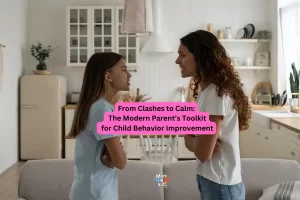
Essentially a time out is a technique that is used to help manage your child’s behavior. If your child does something that is unacceptable, then you simply have them go somewhere that is away from the rest of the activities that are going on in the home. This can be a certain chair, their room, or a corner. The basis form of punishment is to help children understand that when they do things that are unacceptable, they are going to lose the opportunity to be around others.
While it may sound great to you in theory, you may have a hard time actually enforcing it, and there are a variety of reasons that this may be the case. Let’s take a look at some helpful tips that will allow you to take timeouts and use them effectively to help educate and teach your children to behave properly without any form of violence or hurtfulness.
Now, here are 7 strategies for effective discipline and effective timeouts:
Tip #1 – You Must Always Be Consistent – The first thing to remember if you want to make sure that you are using timeouts in an effective way is to always be consistent. This is one of the most important things that you need to remember if you are going to use timeouts on your child. Whenever you say that you are going to give them a time out, you need to make sure that you do it or they’ll realize that they can push you so far until you act. This means you’ll lose control and respect.
Make sure that offences that you punish once with time out are not let to slide the next time they do it. Keeping up with your kids can be hard work, and sometimes it may seem easier to let something go, but consistency is what is going to make this work for you and your child.
Tip #2 – Don’t Feel Bad – When you have to put your child in time out, don’t let them make you feel bad. Some children will try to talk you out of the punishment or make you feel guilty, but don’t let this affect you. In fact, you should avoid talking to your child while they are time out, which can keep you from feeling bad. Remember, your child can sense your feelings, so if you are feeling bad or guilty, they just may catch this and try to play upon it to win against you.
Tip #3 – Avoid Time Outs That are Too Long – Time outs can be used effectively, but they can’t be too long if they are really going to work for you. Especially for younger children you can’t afford to make the time out too long or your child is going to forget why they are in time out. Usually a good rule of thumb is to choose a time period that is correspondent to your child’s age. If your child is young, keep it short and sweet, but older children can have longer time outs.
Tip #4 – Let Your Child Know What Time Outs are All About – A time out is not going to be effective for your child if they don’t know what time outs are all about. Make sure that you explain the time out to them before you begin to use it as a form of punishment. Let them know what kinds of actions will get them a time out so that they are not surprised. Also, when you are actually giving a time out, make sure that you explain to your child why you are giving them the time out so there is no confusion. It is not going to be an effective tool for discipline if they don’t understand what it is or why they are getting at time out.
Tip #5 – Don’t Overuse Time Outs – Time outs can be a great form of discipline, but overuse can begin to make them ineffective. Make sure that you only use a time out for specific infractions. Sometimes other punishments or positive reinforcement can be a better choice, so don’t always use a time out. Over use it and you’ll find yourself in trouble.
Tip #6 – Remember to Use Positive Reinforcement Along with Time Outs – Of course time outs can work wonders, but they work best when you use positive reinforcement along with them. For example, if you have to put your child in a time out, at the end of that time out, make sure that you use the positive reinforcement of a long hug to let them know how much you love them. Kids really do like to please their parents and often the combination of positive reinforcement with time outs can work wonderfully.
Tip #7 – Always Have a Backup Plan – It is important that you always have a backup plan, especially if you happen to have a strong willed child. If they decide not to stay in time out, you need to already have a plan for what will happen. Sometimes you’ll have to shut the door on a room or you may need to resort to something more drastic. However, don’t let your child catch you off guard, since that’s probably what they really want to do. So, have a backup plan in place that you can use if you need to.











9 Comments